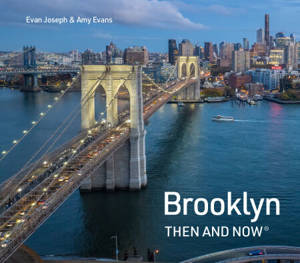
Je cadeautjes zeker op tijd in huis hebben voor de feestdagen? Kom langs in onze winkels en vind het perfecte geschenk!
- Afhalen na 1 uur in een winkel met voorraad
- Gratis thuislevering in België vanaf € 30
- Ruim aanbod met 7 miljoen producten
Je cadeautjes zeker op tijd in huis hebben voor de feestdagen? Kom langs in onze winkels en vind het perfecte geschenk!
- Afhalen na 1 uur in een winkel met voorraad
- Gratis thuislevering in België vanaf € 30
- Ruim aanbod met 7 miljoen producten
Zoeken
€ 21,76
+ 21 punten
Uitvoering
Omschrijving
Pairing archive and contemporary photographs of the same location side-by-side, Brooklyn Then and Now® provides a visual chronicle of the borough’s past, full of rich history and culture.
Home to more than 2.5 million people, this book is a testament to the New York City borough which has had many faces over the course of its fascinating history.
Discover the streets and buildings that have witnessed generations of immigrants, industry workers and artists: those who today keep up the traditions which have characterized Brooklyn neighborhoods for decades and contribute to this vibrant cultural nexus.
Featuring sites such as: the Brooklyn Bridge, Williamsburg, Bedford-Stuyvesant, Brooklyn Academy of Music, Brooklyn College, Coney Island, Brooklyn Paramount Theater, and more
With incredible modern-day shots by award-winning photographer Evan Joseph
Packed with carefully researched history full of intriguing figures, enlightening stories and public record
Uncover the hidden history of this thriving, ever-changing borough in Brooklyn Then and Now.
Home to more than 2.5 million people, this book is a testament to the New York City borough which has had many faces over the course of its fascinating history.
Discover the streets and buildings that have witnessed generations of immigrants, industry workers and artists: those who today keep up the traditions which have characterized Brooklyn neighborhoods for decades and contribute to this vibrant cultural nexus.
Featuring sites such as: the Brooklyn Bridge, Williamsburg, Bedford-Stuyvesant, Brooklyn Academy of Music, Brooklyn College, Coney Island, Brooklyn Paramount Theater, and more
With incredible modern-day shots by award-winning photographer Evan Joseph
Packed with carefully researched history full of intriguing figures, enlightening stories and public record
Uncover the hidden history of this thriving, ever-changing borough in Brooklyn Then and Now.
Specificaties
Betrokkenen
- Auteur(s):
- Uitgeverij:
Inhoud
- Aantal bladzijden:
- 144
- Taal:
- Engels
- Reeks:
Eigenschappen
- Productcode (EAN):
- 9780008716110
- Verschijningsdatum:
- 4/06/2025
- Uitvoering:
- E-book
- Beveiligd met:
- Adobe DRM
- Formaat:
- ePub

Alleen bij Standaard Boekhandel
+ 21 punten op je klantenkaart van Standaard Boekhandel
Beoordelingen
We publiceren alleen reviews die voldoen aan de voorwaarden voor reviews. Bekijk onze voorwaarden voor reviews.









